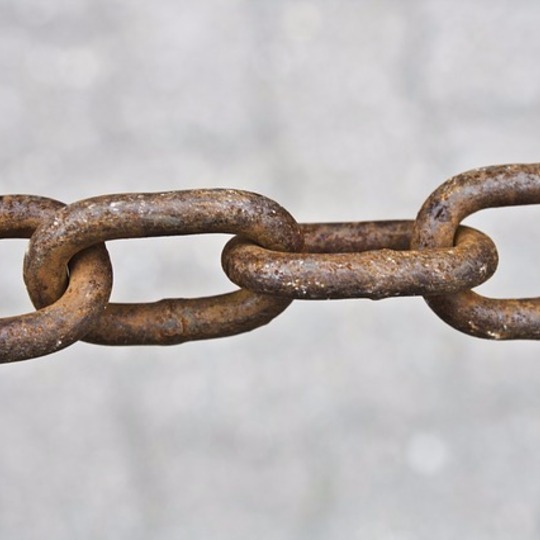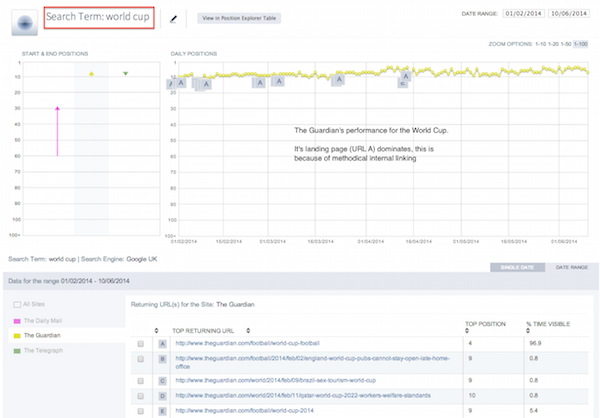Best Practices For Internal Linking And Reviews Of Expertise
Internal linking is a key SEO tactic for publishers. In this post I’ll look at what it is, why it’s important, and some key tips for effective linking.
I recently wrote about the ways in which SEO and content marketing can work together, and I see internal linking as one of the most important ways.
What is Internal Linking?
Web practitioners from various disciplines may have different terms for this, but I think this is a term that’s well understood in the SEO ‘community’ and beyond.
Broadly speaking, internal linking refers to any links from one page on a domain which lead to another page on that same domain.
This can refer to the main site navigation, like the links you see above this article to our sections on SEO, PPC etc. It also refers to links within articles to related content, such as this link to an article on duplicate content.
For the purpose of this post, I’m mainly going to confine myself to the latter – the editorial links within articles.
This is not to denigrate the importance of the broader site architecture, but more because links within articles are more of a day to day SEO tactic, and they are generally controlled by the site’s writers and editors rather than a tech team.

Why is Internal Linking Important?
One major reason, according to Starcom’s Jason McGovern is that it’s one of the few methods site owners can use to tell Google (and visitors) that a particular page of content is important.
Also, as Jason points out:
From a strategic perspective, it helps site owners bridge the ‘authority gap’ between their most linkworthy content and their most profitable content.
So, for example, we can use a link from a popular, evergreen, post which attracts regular traffic to promote the latest ClickZ Live event, or a piece of paid content we’d like to raise awareness of.
There are other reasons:
- It provides your audience with further reading options. For example, if you are writing about a new product or service from Twitter, and we’ve written a great post on Twitter in the past, link to it. It provides context for the reader and promotes older content.
- It helps to improve your ranking for certain keywords. For example, if we want a page to rank for ‘search marketing statistics’ and we have a page containing these, then we can point people the page using the relevant anchor text. This sends a clear signal to Google that this page is relevant to search users typing in that phrase.
- It can help you to promote events and other paid services. If we’re talking about link-buildng and we have a great speaker on covering that topic at an upcoming event, that’s an opportunity to promote them.
- It helps Google to crawl the site. Internal links in articles, as well as in category and tag pages, help Google to index pages more efficiently.
SEO Consultant Mags Sikora has more to add to this point:
Large websites, like travel sites for example, produce a huge amount of content and the differences between landing pages sometimes are very subtle. For example, luxury hotels in New York vs. 5-star hotels in NY.“Luxury” related terms would be used on both pages. Of course, 5-star hotels are luxury hotels, but not every luxury hotel gained 5-star ranking. Without correct interlinking, this could confuse Google, especially if there are no external links pointing to those pages.
How Significant a Ranking Factor is Internal Linking?
I’ve always viewed internal linking as an important tactic from a publishing perspective, and have been able to help my target pages rank thanks to the effective use of this tactic.
How much does it help with Google though? I asked the experts how much of a factor it is:
Jason McGovern Associate Director, SEO at Starcom MediaVest Group:
Internal linking is easily one of the most important and most overlooked factors in hitting your rankings goals.I think it tends to be overlooked as an SEO tactic because many SEOs simply believe it’s not an issue anymore because sites today have such complex navigation menus.That said, even today I have been able to drive significant results for clients purely on the back of optimizing internal navigation structures.
Mags Sikora:
Based on my experience, I strongly believe interlinking related factors have strong weight within Google algorithm. I work with startups and have an opportunity to run varied tests on completely new websites.I saw websites start rankings for keywords used in the anchor text of internal links without any external links pointing to those websites. Of course, I am not talking about highly searchable terms but it really shows it is an important part of SEO.
Example: How Mail Online Failed to Use Internal Linking
This example is from last year, and relates to content around the FIFA World Cup. There is worldwide interest in this event and lots of search volume, even in the US ;)
Therefore, ranking for this term becomes very important for publishers, as it offers the chance to attract a lot of traffic before and during the event.
May publishers created site sections dedicated to the event, such as this from The Guardian. Mail Online had a similar page, as did many other publishers.
In the case of The Guardian, all world cup related content ‘lived’ in this section, and internal links were used to point to this landing page.
The result was a very steady, and high ranking for The Guardian’s World Cup page. As the chart shows, this landing page ranked in the top ten for the four months before the start of the tournament.

This meant that The Guardian was in a strong position to attract some of the traffic which spiked in the run up to the event, simply by having a joined up internal linking strategy.
By contrast, Mail Online, the most popular English language news site (thanks to a ton of clickbait)failed to link consistently to its World Cup page.
Essentially, it failed to tell Google (and its users) that this page was important. The result was that all of the articles Mail Online published about the World Cup were essentially competing with its own World Cup landing page.
In the chart below, the pink line indicates the landing page, and the yellow lines are the various articles related to the event.

As we can see, the landing page didn’t reach higher than page four of Google for this term in the run up to the event, while individual article pages, though they made more of an impression, couldn’t make it to page one.
I’m aware there are other factors at play here but, if we assume that both sites have similar authority, then the internal linking here is making the difference.
Essentially, The Guardian has given a clear indication to Google of the pages it wants to rank for the term, while Mail Online has failed to give Google any indication, hence the volatility of its rankings.
How to Use Internal Linking More Effectively
I asked the SEOs mentioned here for their tips on effective internal linking:
Jason McGovern
- Look at Moz’s ‘Top Pages’ report for your site and ask yourself, how many of those pages link to your most ‘SEO-valuable’ content.
- If you’re using WordPress there are plugins available that will automatically turn keywords in page text to keyword relevant links pointing to some of your most important content.
- It’s a little complicated, but you can use filters and pivot tables in Excel on data exported from SEMRush to find the pages with the most rankings between 5 and 15. Once you’ve identified those pages, comb your site to find 5-15 new links from existing site content to those pages (depending on the size of the site).
- When it comes to internal linking and SEO, the six most important words are ‘Screaming Frog, Screaming Frog, Screaming Frog’. Take advantage of the tool’s ‘Inlinks’ and ‘Level’ fields to identify pages that need some help from internal linking and which pages are getting more attention than they are worth.
Mags Sikora:
- Before inserting a link, I always ask myself: what is the probability that a user will click on this link? The higher the probability, the more juice this link will pass and the most value this link will from SEO point of view.
- Things like position of the link on a page (within a first few sentences of a blog post/ above the fold), its font and the colour; and of course anchor text itself (the length and keywords used) and most importantly the context it is used and its relevancy to the content it is mentioned on and linking to- all of that influences the click hence link juice it passes.
- On the homepage, I always recommend adding links to most important pages. Those could be product pages or main categories, depending on SEO strategy of a particulate website.
- I also try to vary anchor text pointing to a specific page across the site but keep it very closely related to the topic of the landing page. For large websites, HTML sitemaps are very important part of interlinking strategy–they not only help users to find right pages but also help distribute the link juice efficiently within the site.
Jamie White, Head of Technical SEO, Search Laboratory:
- Ensure that whenever you build a new piece of content, such as on your blog, that you are including links to relevant and important landing pages. This will ensure that any links you build to your content will also have a secondary benefit on the pages you’ve internally linked to.
- Links within content typically pass greater value because they are surrounded by contextual words which can have another benefit in terms of ranking for these related phrases.
- Add internal links in moderation. Every link you include in a page will receive a portion of the link authority of that page, so the more links you include, the less value each will receive.
In addition to these tips I’d like to add a couple of my own:
- Ensure that internal links appear to be natural, not manufactured. Links should occur as part the natural flow of an article and shouldn’t look out of place to the reader.
- Make sure links add value. SEO is a factor of course, but links should also add value to the reader, perhaps pointing to an in-depth look at a topic which was only briefly mentioned in an article, or pointing users at some relevant statistics.






Post a Comment